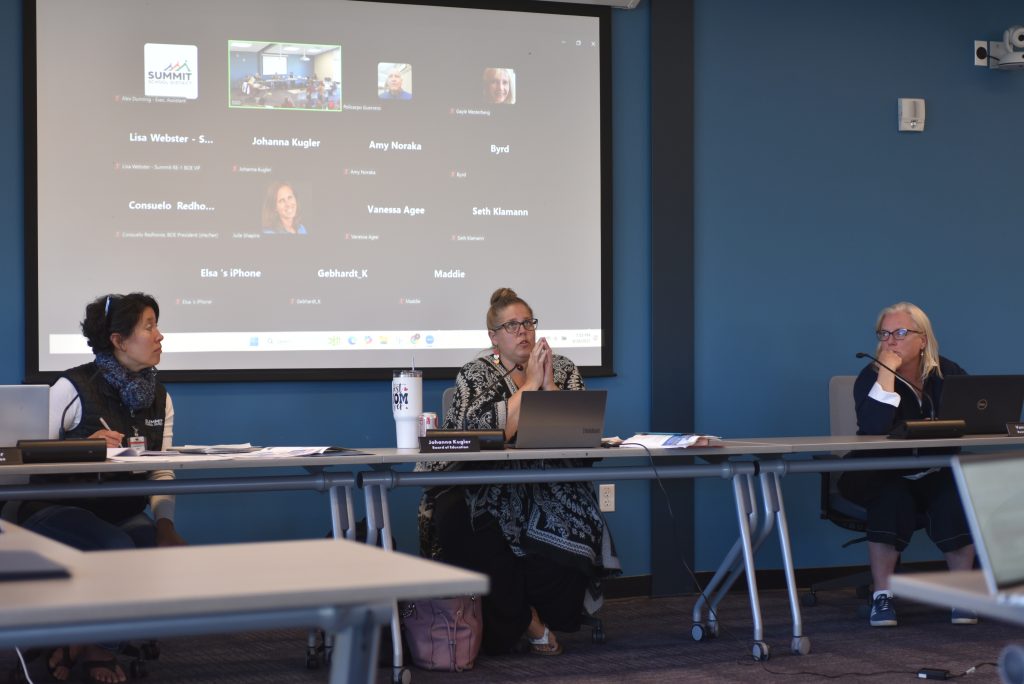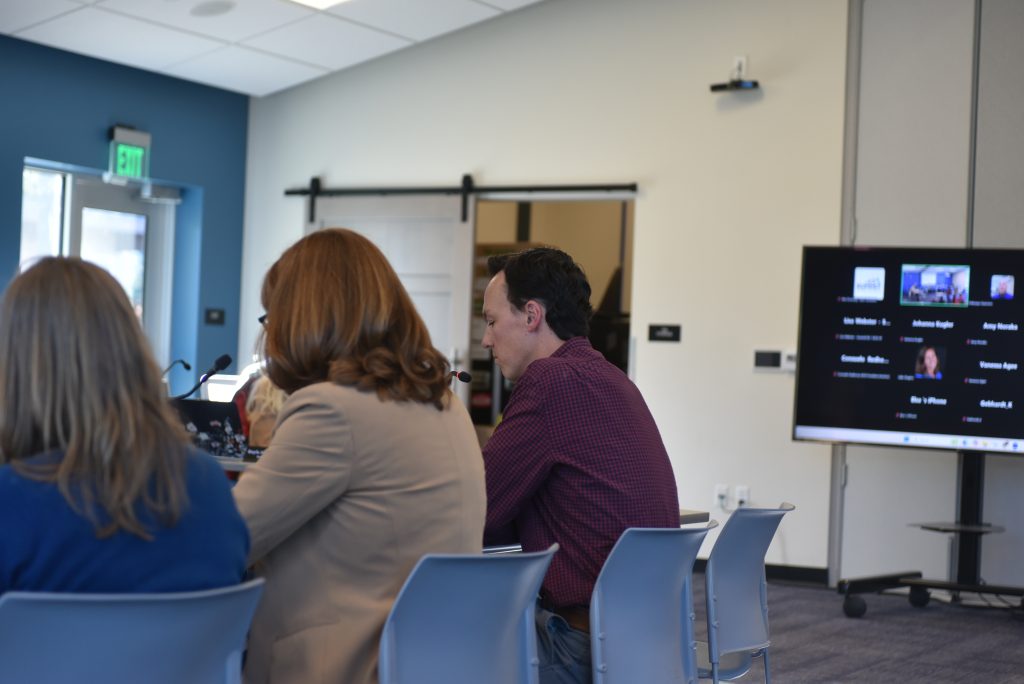Summit school officials anticipate ‘attendance and learning challenges all year long’ after seeing impacts of ICE operations

Kit Geary/Summit Daily News
In a recent meeting with her former employer, the Summit School District, Colorado House Speaker Julie McCluskie got insight into what school officials say is a correlation between recent immigration enforcement operations and declining attendance.
Superintendent Tony Byrd told McCluskie and Sen. Dylan Roberts during a Thursday, Sept. 18, Board of Education meeting that rumored events from the week of Monday, Sept. 8, and two U.S. Immigration and Customs Enforcement operations on Tuesday, Sept. 16, resulted in a drop in attendance that has persisted for around two weeks.
The week of Sept. 8 saw an approximate 35% drop in attendance district-wide, and Dillon Valley Elementary School’s attendance was at 61% for the week due to rumored immigration enforcement activity on Thursday, Sept. 11. Preliminary data shows attendance was around 78% to 82% district-wide the week of Monday, Sept. 15, compared to the typical 90% the district sees, according to Byrd.
During the operations on Sept. 16, Byrd said “well over 200 students were doing everything they could to go home,” acknowledging how “frightening” the experience was for many.
Both operations on Sept. 16 happened near Summit School District campuses. One occurred at a restaurant called Hacienda Real in Frisco, which is about a mile away from Summit Middle School and Snowy Peaks Jr./Sr. High School. The other occurred at a home in Dillon Valley that is around a mile away from Dillon Valley Elementary School.
Byrd said preliminary data showed on Wednesday, Sept. 17, the day after the operations, the high school’s attendance was around 72%.
“After this week’s event, not only was the anticipation of the threat real (but) it happened … I suspect we’re going to have attendance and learning challenges all year long,” he said.

Board member Julie Shapiro noted her concern with the drop in attendance due to a key day of the year approaching: head count day.
Colorado uses a per pupil funding method for its public schools. Each year, the state collects enrollment data from districts based on a head count taken on or around Oct. 1.
Chief financial officer Kara Drake said the state will use same-year enrollment data if a district is seeing growth in its population, otherwise it will typically fund the district based on a multi-year average for enrollment.
A bill passed in the 2025 legislative session sets a three-year per-pupil enrollment average in the formula for 2026-27 and 2028-27.
Drake said there is a “cumulative effect” to having lower-than-typical attendance on Oct. 1. The averaging formula includes current data for the year, so fewer students in attendance would reflect in the per pupil funding the district receives that year. It also would impact the next few years because the three-year averaging would include data from head count lower than that of the true student population.
Shapiro worried about the attendance trend continuing and impacting the amount of money the district can get from the state. Board member Vanessa Agee added to Shapiro’s comments, bringing light to the fact that Summit receives around $12,000 per student in state funding and some public schools in states like New York get around $32,000 per student.
Roberts said he has been working with school officials in two other Colorado High Country counties he represents, Routt and Eagle, that saw immigration enforcement activity over the summer. He said it could be beneficial to create a working group among district officials in the region to share their experiences and what has been working for them.
McCluskie noted how important the immigrant community is to the fabric of Summit County and said there is a lot of fear in “virtual town squares” that is ultimately damaging to children. She and board of education members touched on the role safety plays in a productive learning environment.
At the Sept. 18 meeting, Roberts also touched on the work the legislature has done with immigration enforcement through the passing of Senate Bill 25-276. He said the legislation is a culmination of years of work.
“It makes it explicitly clear that Colorado law enforcement is not an arm of the federal government when it comes to immigration matters,” he said.
He said the bill protects law enforcement agencies from being “commandeered” by U.S. Immigration and Customs Enforcement. He said the law made “very strict rules” around information sharing between state, federal and local authorities, “making clear that the federal government’s immigration operations are theirs alone.” He said local agencies may participate alongside the operations for the sake of “crowd control.”
More information about Colorado’s student head count day can be found at CDE.State.CO.US/datapipeline/studentoctobertimeline.

Support Local Journalism

Support Local Journalism
As a Summit Daily News reader, you make our work possible.
Summit Daily is embarking on a multiyear project to digitize its archives going back to 1989 and make them available to the public in partnership with the Colorado Historic Newspapers Collection. The full project is expected to cost about $165,000. All donations made in 2023 will go directly toward this project.
Every contribution, no matter the size, will make a difference.









